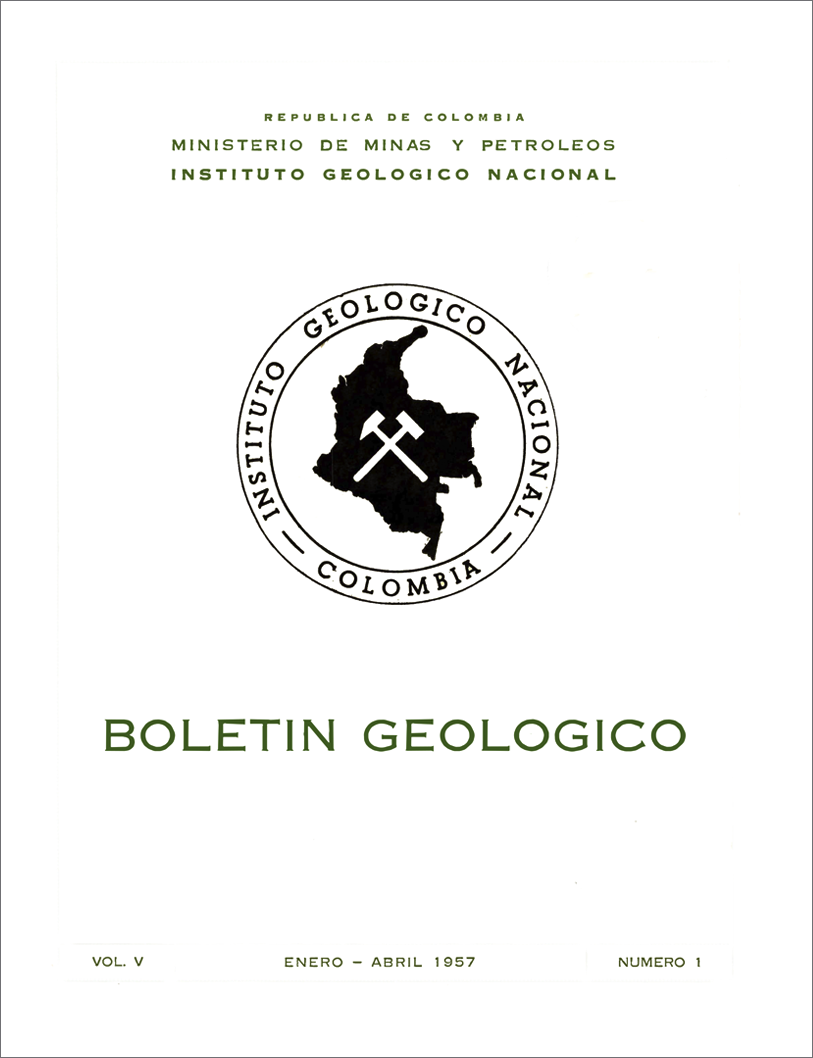Practical results of the hydrogeology section of the National Geological Institute in three years of work
DOI:
https://doi.org/10.32685/0120-1425/bolgeol5.1.1957.303Keywords:
Supplying, groundwater, exploitation, catchment, use, water wellLicense
Copyright (c) 1957 Servicio Geológico Colombiano

This work is licensed under a Creative Commons Attribution 4.0 International License.
Downloads
How to Cite
Issue
Section
Published
Abstract
The hydrogeology section of the National Geological Institute, Ministry of Mines and Petroleum, was created at the end of 1953. However, even before that, Dr. W. Diezemann, hydrogeologist of this Institute, had been working on the systematic study of the Nation's groundwater resources. Dr. W Diezemann demonstrated the necessity and convenience of using underground water sources to supply populations, even those located on the banks of large rivers. The urgency of a campaign in this sense lies in several complex factors such as a) the need to provide the populations with water in quantity, quality, and hygiene acceptable for human consumption and without which no progress is possible; b) the scarce economic possibilities of the social conglomerates, because in Colombia the high cost of a public supply, technically and hygienically acceptable, is not related to the scarce economic resources of the p populations; c ) the example of other European and American countries, economically and technically more advanced than ours, where groundwater is widely used for public and industrial supply; d ) in many places of the country, groundwater is the only feasible possibility for public supply.
After three years of intensive work during which more than a hundred hydrogeological studies have been carried out, the Hydrogeology Section can offer a satisfactory list of practical achievements. The following list of groundwater abstractions built based on studies carried out by this office is only partial and covers the most important works.
We must note that the use of the catchments escapes our efforts because the hydrogeological work ends with the construction, completion, and gauging of the wells. On some occasions, perhaps due to the lack of a popular tradition in the appreciation of underground water, misunderstanding has frustrated the efforts. There are places where the wells built with the highest technique spontaneously spill several liters per second of water. Meanwhile, the inhabitants of the nearby village lack this element, and new, more spectacular projects are studied, highly expensive in their construction, complicated in their maintenance from practical points of view to our environment and therefore whose realization and effectiveness is remote in populations of second and third importance.
The numbers, authors, and titles of the reports that served as the basis for the completed projects will be noted, followed by the results of the boreholes. Finally, it will be noted whether the locality and construction of these projects were adhered to and confirmed by the indications and conclusions of the reports and the status of the development of these wells.









